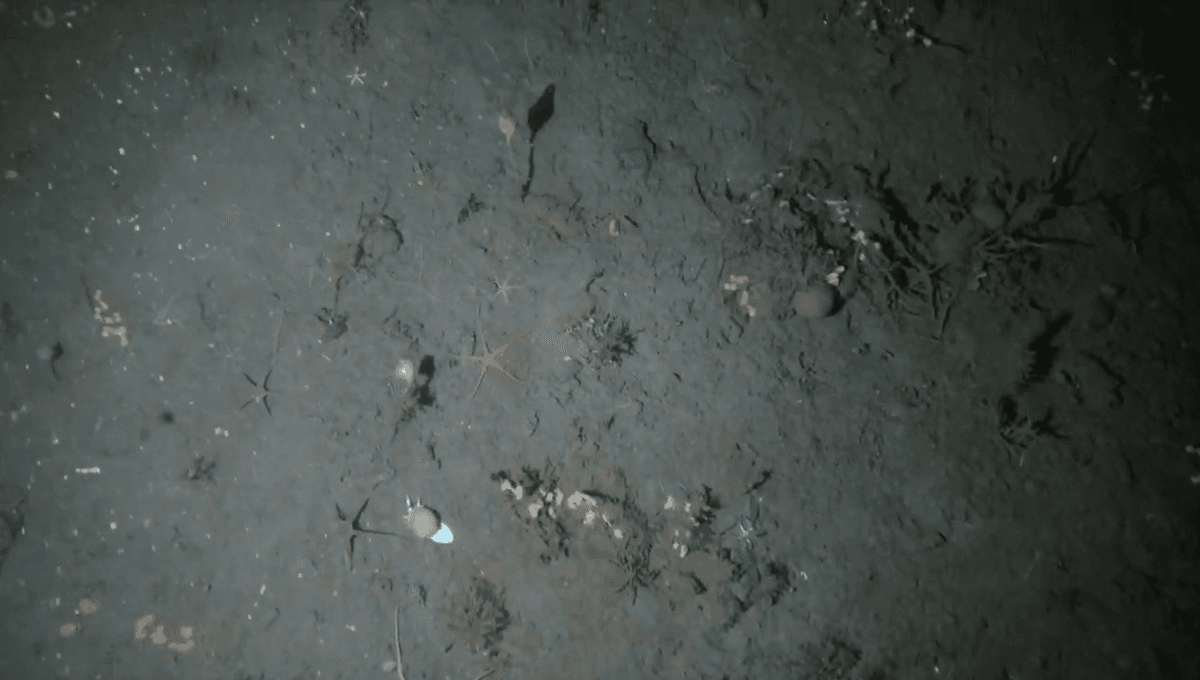
It was once hoped that the Antarctic and its icy, remote waters were relatively unscathed by human activity – but those hopes are being swiftly dashed. In a new study, marine scientists have shown how ships are causing long-term damage to the seabed in Antarctic waters, resulting in significant harm to the strange ecosystems that inhabit this region.
Researchers used underwater cameras to document the seafloor at 36 sites across the Antarctic Peninsula and South Georgia Island. The resulting footage clearly shows how anchoring and shipping chains are leaving behind an abundance of scars, grooves, and mud deposits on the ocean floor.
In areas where anchors and chains had been dragged, marine life was almost entirely absent or severely damaged. All that remained amid the destruction was a colony of crushed sponges and a stark lack of other marine species. You’ll be hard pushed to find any Antarctic sun stars or giant Antarctic octopus under these conditions. Nevertheless, in adjacent areas to the anchoring sites, marine life appeared to be flourishing.
“The observed damage was a near miss to three giant volcano sponges, believed to be the oldest animals on the planet, which may live up to 15,000 years,” Matthew Mulrennan, first study author and a marine scientist and founder of KOLOSSAL, said in a statement.
“The weird and wonderful animals that are impacted, like sponges, are important for filtering water, carbon sequestration, and providing shelter, food, and complex habitats which benefit the whole marine ecosystem, including penguins and seals – the animals tourists come to see,” Mulrennan added.
All of these changes have occurred relatively recently. In recent years, Antarctica has experienced a notable increase in tourism vessels, along with a rise in scientific research ships and fishing boats.
During the 2022–23 season alone, at least 195 tourism, research, and fishing vessels, as well as private yachts, were recorded in anchorable waters around Antarctica. It’s believed that many more unregulated vessels may be operating in the region without proper licenses.
Here’s the big problem: while the damage to the Antarctic seabed has occurred over just a few years or decades, the recovery is likely to take much longer. Life in Antarctica operates on a different timescale than other marine ecosystems. Many of the species living at anchorable depths are slow-growing and stationary, often taking decades (or even centuries) to establish their colonies. If a sudden force disrupts them, they won’t bounce back overnight.
“We know that anchor impacts in tropical reefs can last a decade. In muddy sediment, the scars can still be visible over a decade later. Ecological recovery is really site-specific. Things in cold waters are much slower growing than in warmer temperatures, so I expect that recovery would take longer the higher the latitude,” explained Dr Sally Watson, study co-author and marine geophysicist at the National Institute of Water and Atmospheric Research in New Zealand.
The level of destruction is so severe that researchers have compared anchoring in Antarctica to bottom trawling – a highly destructive practice on the seafloor, the impacts of which are starkly visible here.
“Anchoring is likely the most overlooked ocean conservation issue in terms of global seafloor disruption; it is on par with the damages from bottom trawling,” Mulrennan concluded. “It’s a pressing environmental issue, but it’s out of sight, out of mind.”
The scientists that more research needs to be carried out on the short- and long-term impacts of anchoring on the seabed. They also emphasize the importance of gaining a clearer picture of shipping activity in the Southern Ocean and determining whether stronger protections are required to safeguard its future.
The study is published in the journal Frontiers in Conservation Science.
Source Link: World-First Footage Shows How Ship Anchors Are Ripping Up Antarctica's Once-Pristine Seabed Ecosystem